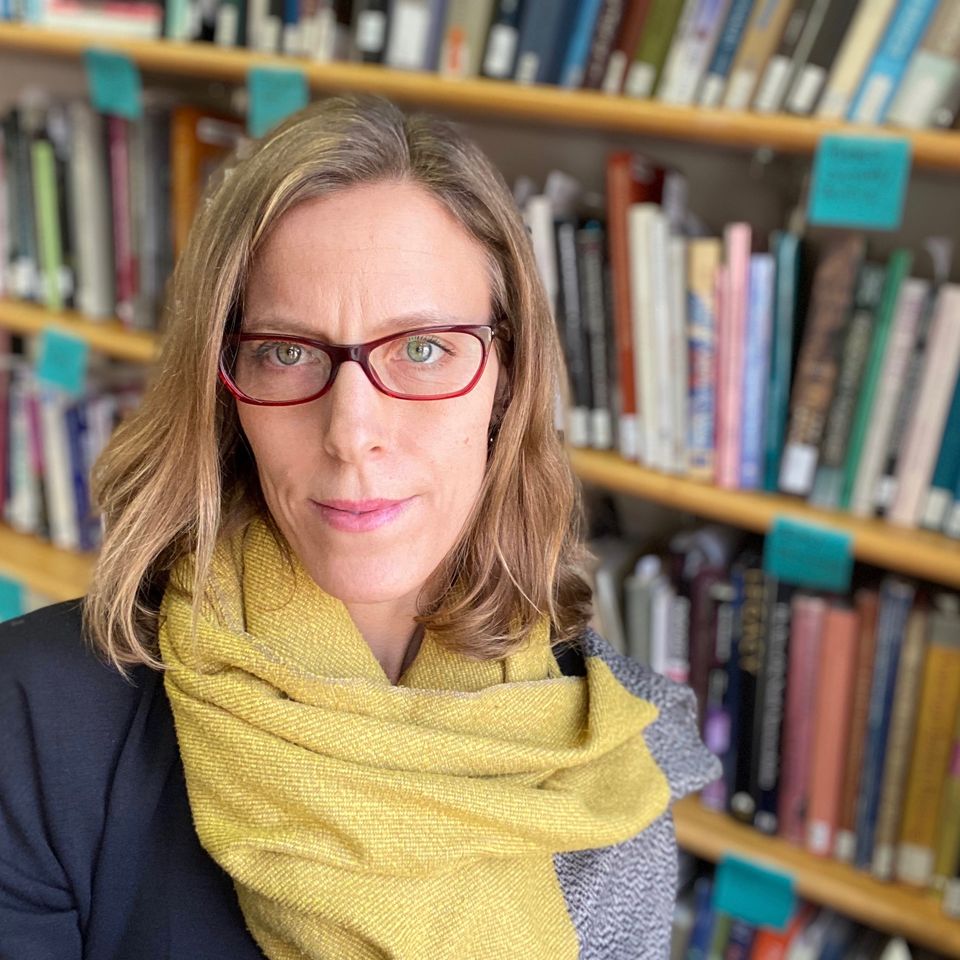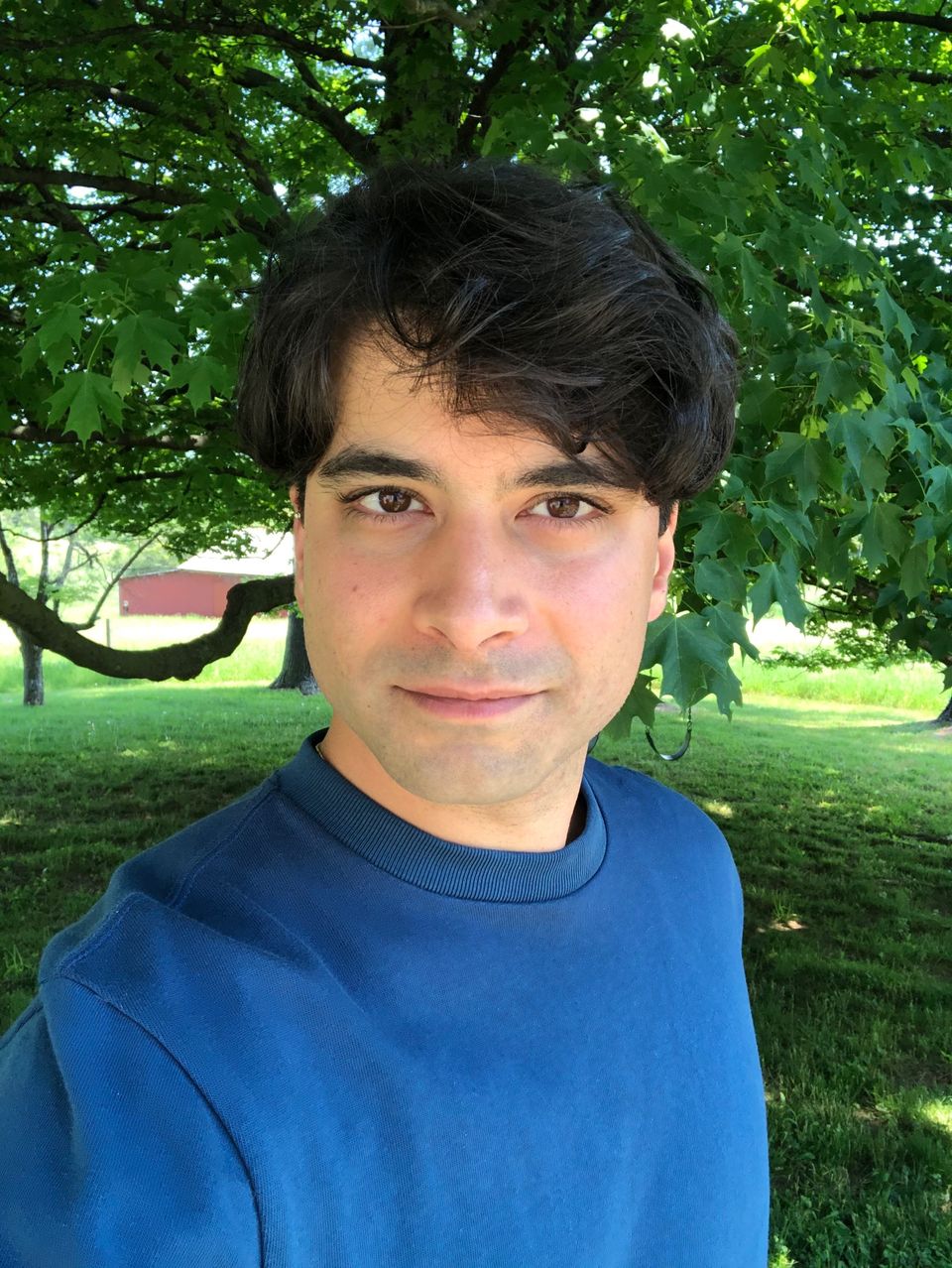Sascha Scott Receives the 17th Annual Frost Essay Award for Her Article About Decolonizing the Field of American Art
Sascha Scott is the recipient of the Smithsonian American Art Museum’s Patricia and Phillip Frost Essay Award for her article “Georgia O’Keeffe’s Hawai'i? Decolonizing the History of American Modernism,” which appeared in the summer 2020 issue (vol. 34, no. 2) of American Art. In her essay, Scott calls for art historians to decolonize the field of American art by fully contextualizing artwork related to oppressed peoples and cultures.
Scott’s challenge to the field is illustrated through an exploration of paintings commissioned for Dole Pineapple Co. advertisements in the late 1930s. Scott situates Georgia O’Keeffe, her paintings and the ad copy in relation to the U.S. conquest of Hawai’i and the subjugation of Indigenous Hawaiians. She shows that narratives of discovery and possessive language, such as “O’Keeffe’s Hawai’i,” are complicit with settler-colonialism, whether used by O’Keeffe, the original Dole ads or by contemporary scholars and curators. The Frost Essay Award jurors praised Scott, saying that her work “is groundbreaking and demonstrates the benefit of someone who has spent many years thinking about the issues that they articulate and analyze within the context of this essay.”
The Frost Essay Award recognizes excellent scholarship in the field of American art history by honoring an essay published the previous year in American Art, the Smithsonian American Art Museum’s peer-reviewed journal for new scholarship. Each year, the winning essay must advance the understanding of American art history and demonstrate original research and fresh ideas. The award, established in 2004, is made possible through the Patricia and Phillip Frost Endowment.
A jury of three members of the journal’s editorial board selected the winner from articles published in 2020. The jurors who awarded the $1,000 prize were Kirsten Pai Buick, professor of art history at the University of New Mexico; Anne Goodyear, co-director of the Bowdoin College Museum of Art; and Jolene Rickard (Tuscarora), associate professor at Cornell University.
The jurors wrote that by “using decolonial methodology, Scott engages a canonical figure and yet resituates them within the history of American art. It is the committee’s hope that scholars who work on O’Keeffe in the aftermath of this essay may be inspired by the model that Scott provides. We were impressed by the author’s conclusion, which was a call to action. Scott’s essay marks a pivotal moment in the field.”
Scott is an associate professor of art history in the department of art and music histories at Syracuse University, where she is also director of graduate studies and part of the core faculty for the Native American and Indigenous studies program. Scott specializes in 19th- and 20th-century American and Native American art, with particular attention to the art and politics of the colonization of Indigenous lands and Native resistance against U.S. imperialism. Her first book, A Strange Mixture: The Art and Politics of Painting Pueblo Indians (2015), addresses representations of Pueblo peoples by Native and non-Native artists in the fraught political context of the 1910s through the 1930s. She is also the author of numerous academic essays including her 2013 Art Bulletin essay on San Ildefonso Pueblo painter Awa Tsireh, which won the College Art Association’s Arthur Kingsley Porter Prize. Scott is currently working on two book projects. The first, O’Keeffe Interrupted, critically resituates the work of O’Keeffe within contexts of cultural colonialism, ecological imperialism and wartime technological disruptions. The second book, Modern Pueblo Painting: Art, Colonization, and Indigenous Visual Sovereignty, addresses how first-generation Pueblo painters both engaged with and refused aspects of dominant markets and culture.
This year, for the first time, the jury has awarded an honorable mention for the Patricia and Phillip Frost Essay Award. Jason Vartikar’s article, “Ruth Asawa’s Early Wire Sculpture and a Biology of Equality,” published in spring 2020, argues that sculptor Ruth Asawa’s biomorphic sculptures can be understood as metaphors for racial equality because they resemble the universal processes of cell reproduction and division. Vartikar connects an archival discovery, Asawa’s college biology notebook drawings, to the contemporaneous mid-20th-century efforts by UNESCO and other authorities to dispute ideologies of racial hierarchy, which they did by pointing out the molecular universality of life.
The jurors unanimously agreed that “Art is in many ways anticipatory, and that given the recent rise in attacks, suspicion, and racism of Asian communities, this essay struck us as very timely. Vartikar brings forth very sophisticated ideas about science and their insight about cellular structure and how Asawa used it as metaphor was profound.”
Vartikar is a doctoral candidate in Stanford University’s department of art and art history, where he has been a recipient of the Jeanette and William Hayden Jones Fellowship in American Art and Culture from 2016 to 2021. A critical race art historian, he is writing a dissertation about how Charles Burchfield, an early-20th-century American painter, expressed both the period’s emerging concepts of racial whiteness and an awakening to racism fomented by the early civil rights movement.
The journal American Art is part of the Smithsonian American Art Museum’s active publication program of books and catalogs that complements the museum’s exhibitions and educational programs. Information about subscribing, purchasing single issues or submitting articles to the journal, which is published for the museum by the University of Chicago Press, is available online, journals.uchicago.edu/toc/amart/current. A complete list of past Frost Essay Award winners and additional information about the award are also available on the museum’s website, americanart.si.edu/research/awards/frost.
# # #
About the Smithsonian American Art Museum and its Renwick Gallery
The Smithsonian American Art Museum is the flagship museum in the United States for American art and craft. It is home to one of the most significant and inclusive collections of American art in the world. The museum’s main building, located at Eighth and G streets N.W., is open daily from 11:30 a.m. to 7 p.m. The museum’s Renwick Gallery, a branch museum dedicated to contemporary craft, is located on Pennsylvania Avenue at 17th Street N.W. and is open daily from 10 a.m. to 5:30 p.m. Check online for current hours and admission information. Admission is free. Follow the museum on Facebook, Instagram, LinkedIn and YouTube. Smithsonian information: (202) 633-1000. Museum information (recorded): (202) 633-7970. Website: americanart.si.edu.















